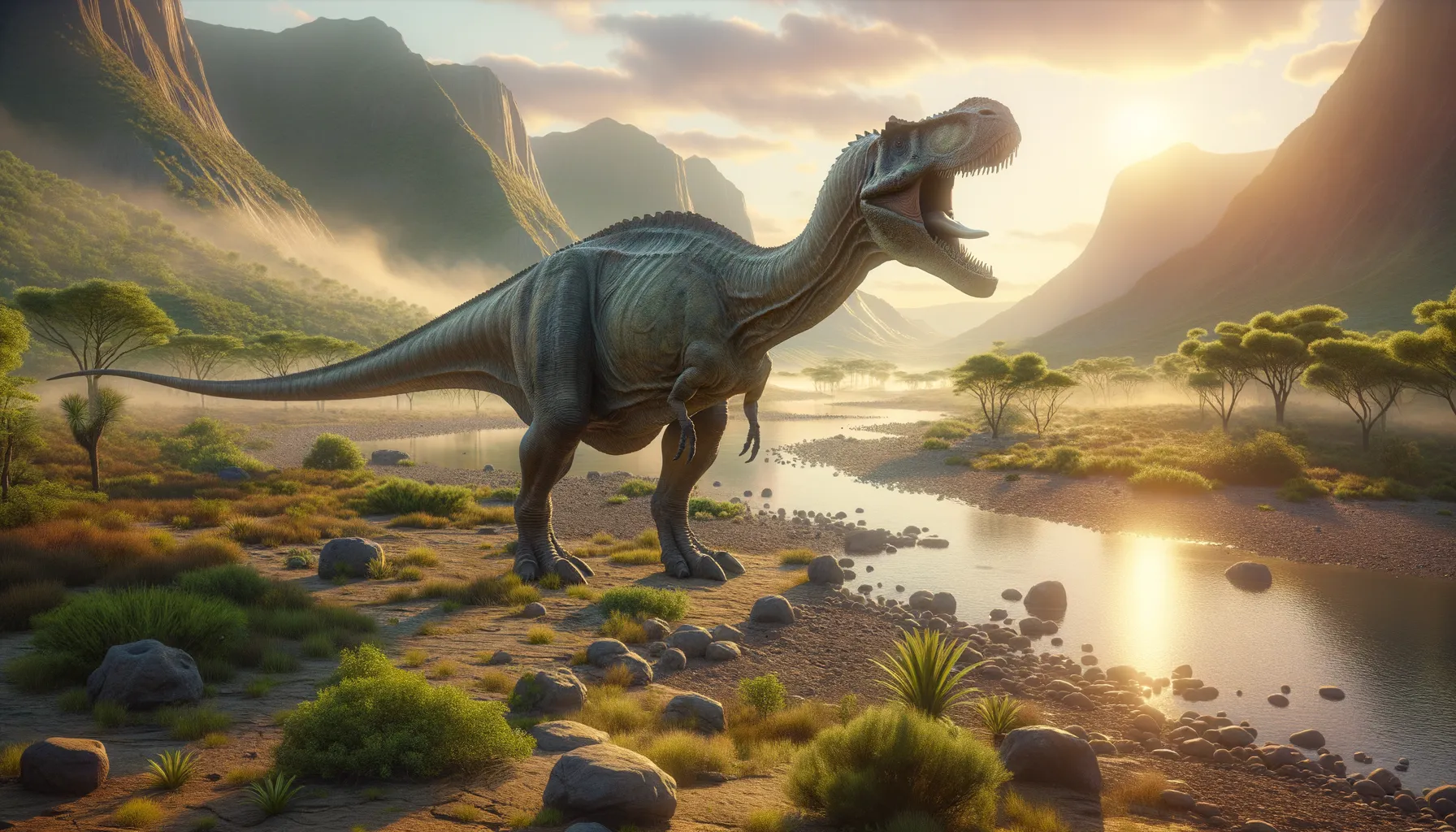
Aragosaurus
A colossal presence from the past.
Period
Jurassic
Length
Measured up to 18 meters in length.
Height
Stood about 4 to 5 meters tall.
Weight
Estimated to weigh around 15 tons.
Aragosaurus was a medium-sized dinosaur that roamed the lands of what is now Spain during the Jurassic period. Known for its impressive size, it played a crucial role in the ecosystem by shaping plant life and interacting with other species. Its discovery in the late 20th century provided valuable insights into the diversity of European dinosaurs. Researchers have extensively studied its bones to further understand its relation to other sauropods.
Diet
Aragosaurus was an herbivore, subsisting on the diverse plant life of its time. Its diet included a variety of ferns, tree leaves, and other vegetation available in its environment.
Hunting
Being a plant-eater, Aragosaurus did not hunt other animals. Instead, it used its long neck to reach high branches, which allowed it to access food that lower ground animals couldn't reach.
Environmental challenges
Aragosaurus lived in a time when the earth was experiencing significant climatic changes, which affected the distribution and type of vegetation. Additionally, it had to coexist with other large herbivores, competing for the same food sources. Its size provided some defense but required vast amounts of food to sustain such a large body. Navigating through dense forests could have posed challenges due to its enormous size.
Speed
Aragosaurus likely moved slowly on land.
Lifespan
Lived approximately 80 years in the wild.
First discovery
Discovered in Spain in 1987.
Fun Facts
- Aragosaurus was a sauropod dinosaur that lived around 130 million years ago during the Early Cretaceous period.
- It was discovered in the Province of Teruel, which is in the northeastern part of Spain.
- Aragosaurus is named after the autonomous community of Aragon in Spain, where its fossils were found.
- This dinosaur is thought to have been a herbivore, munching on plants and possibly living in a forested environment.
- Aragosaurus had a long neck and tail, characteristic traits of sauropods, which helped it reach high vegetation.
- The discovery of Aragosaurus provided important insights into the evolution of sauropods in Europe.
- Aragosaurus's fossils were first described in the late 20th century, offering a glimpse into prehistoric life in that region.
Growth and Development
Aragosaurus likely grew rapidly in its early years to reach a size that protected it from predators. Its growth patterns show that this dinosaur developed a robust skeleton to support a massive body. Juveniles might have relied on protection from adults until they were large enough to fend for themselves. Their metabolism enabled them to convert vegetation into energy efficiently, supporting their development over decades.
Habitat
Aragosaurus inhabited areas with lush vegetation, where food was abundant. It preferred regions with a mix of open spaces for herd movement and forests for shelter. The presence of rivers and lakes in its territory suggests that water sources were also crucial for its survival. Fossil evidence indicates it coexisted with other species, sharing its habitat in what was then a tropical to subtropical environment.
Interaction with other species
Aragosaurus likely lived in herds, which provided protection and social interaction. It coexisted with other herbivores and carnivores, maintaining a balance within its ecosystem. While it didn't interact aggressively with others, its size commanded respect within the animal hierarchy. Social behaviors included communication through vocalizations and physical gestures to maintain group cohesion.
Natural lifespan
Aragosaurus could naturally live up to 80 years.
Reproduction
Reproduction for Aragosaurus likely involved laying eggs in nests prepared in secluded areas. These nests would have been guarded diligently to ensure the survival of the young. The number of eggs laid might have been large, compensating for the low survival rate of juveniles due to predation. Hatchlings emerged relatively small but grew quickly to avoid being preyed upon.
Social behaviour
Aragosaurus displayed herd-like behavior, likely moving in groups to graze and travel. Social interactions included synchronized movements and communal nesting sites. Communication was crucial for survival, involving sounds and displays to warn against potential threats or to signal group movement. Juveniles benefited from the protection and guidance of the herd.
Fossil locations
Fossils of Aragosaurus have been predominantly found in Spain, providing important data about its structure. These discoveries have mostly occurred in the Teruel province, offering insights into the Jurassic ecosystems of Europe. The fossils have helped shape understanding of sauropod dispersion across the continent. Paleontologists used these fossils to establish its connection with other well-known sauropods.
